Available to buy here:
The Garmin eLog is a compliance-focused device for Hours of Service recording, supporting both 9-pin J1939 and 6-pin J1708 diagnostic ports. It’s not compatible with standard OBD-II passenger vehicles, so it’s specifically targeted at commercial trucks. It pairs with your smartphone or tablet through the Garmin eLog app, and records are stored securely for roadside inspections, accessible via USB or Bluetooth. For many truckers, the biggest selling point here is eliminating recurring subscription costs while still meeting FMCSA regulations.
The first standout feature is the no-subscription model. Unlike competitors that lock you into monthly fees, Garmin positions this as a one-and-done purchase, which means long-term savings. Second, compatibility with major diagnostic ports makes it suitable for a wide range of heavy-duty trucks. Third, inspection readiness is a key advantage, with data quickly accessible via USB or Bluetooth, helping avoid roadside stress. Finally, integration with Garmin’s ecosystem adds confidence, as Garmin has a long-standing reputation for reliability in navigation and trucking products.
Based on real-world driver reports, setup is straightforward if your truck uses the supported ports, though some users with Volvo engines or 16-pin systems have needed extra cables. The mobile app has earned mixed feedback—praised for being functional but occasionally laggy on certain devices. Once connected, drivers find the system reliable for recording and storing logs.
✅ Pros: No ongoing fees, FMCSA compliant, wide port compatibility, easy inspection access, backed by Garmin’s reputation.
⚠️ Cons: Not compatible with OBD-II vehicles, extra cable purchase may be required for certain engines, app performance could be smoother.
When it comes to value for money, Garmin’s eLog sits in a unique space. While many competitors cost less upfront, they tie you into ongoing service charges. Over time, the Garmin system usually pays for itself, especially if you’re an independent driver trying to keep operational costs predictable.
Compared to the Rand McNally ELD 50, Garmin avoids subscription fees but has a less polished app experience. Against KeepTruckin ELD, Garmin wins on long-term cost but loses in terms of advanced fleet management features. It’s clear Garmin is targeting the cost-conscious operator who just wants compliance without extras.
If this review is giving you clarity and helping you steer clear of costly mistakes, give that like button a push and subscribe—because staying informed is the real shortcut on the road.
Build quality is solid, with a rugged plug-in module that feels like it can withstand the bumps of daily trucking life. Long-term durability is generally rated well by drivers, with very few reports of failures even after extended use. Garmin’s customer service has a decent reputation in the GPS space, though response times can vary.
The Garmin eLog is best suited for independent truckers, small fleet operators, and owner-operators who value cost savings and straightforward compliance. It’s less ideal for large fleets that need advanced telematics or dispatch integration.
So, what’s the verdict? If you want to stay FMCSA compliant without bleeding cash every month, the Garmin eLog is one of the stronger options in its class. It works best if your vehicle matches the supported ports, but if you’re looking for fleet-wide management tools, you’ll want to explore alternatives like KeepTruckin or Samsara.
Thanks for watching this breakdown. Links to the product are in the comments and description if you want to check it out. Drop your questions or share your experience with the Garmin eLog below—I’d love to hear how it’s working in your rig. Until next time, this is Autovated signing off—keeping your reviews fueled and your decisions on cruise control.
Available to buy here:

























